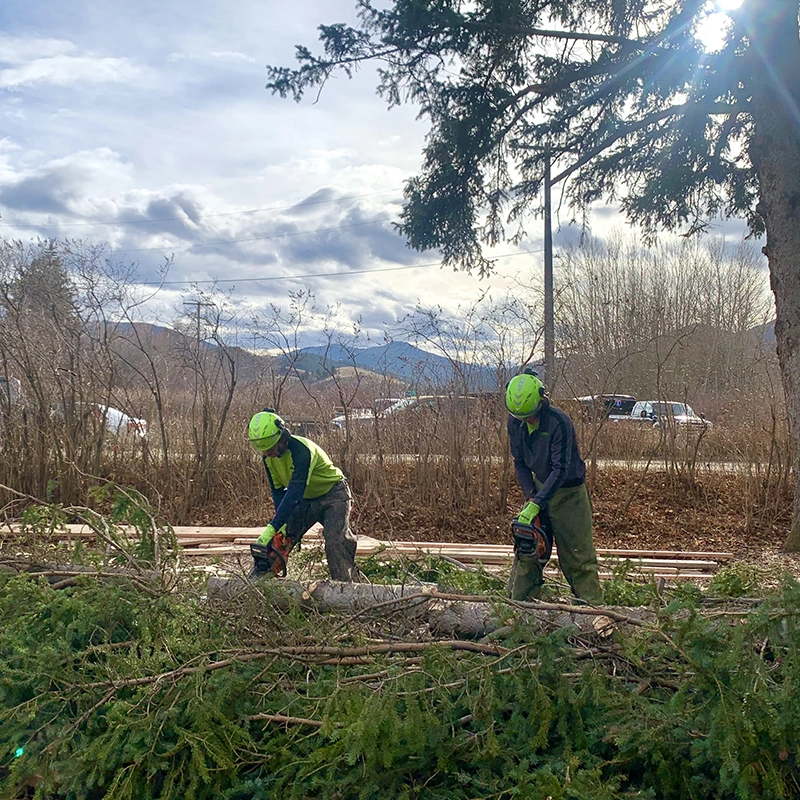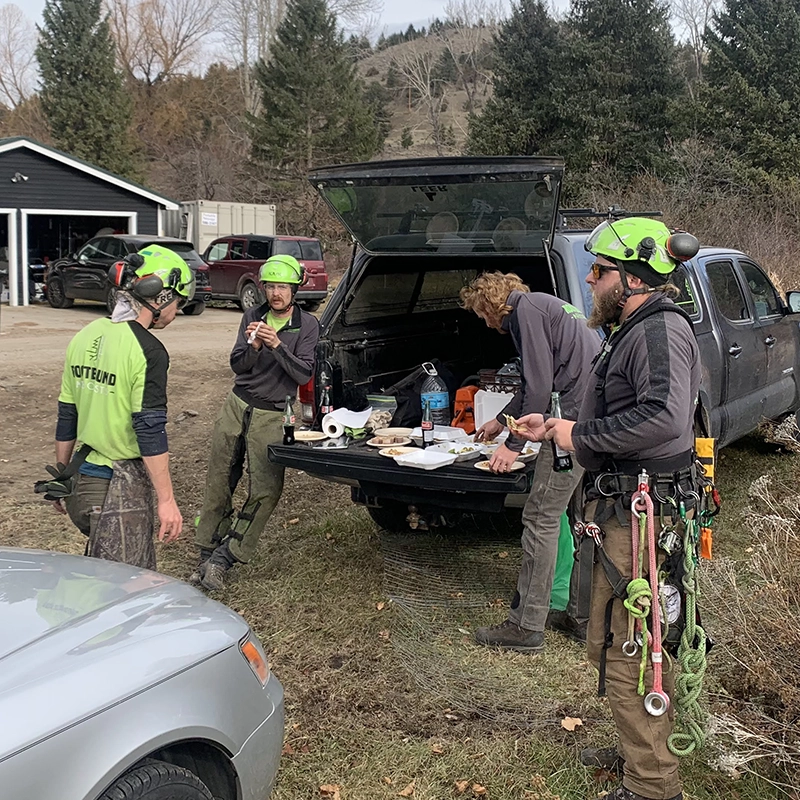
AboutWildfire Preparedness
Wildfire Preparedness Services For Bozeman, MT
If you own property in Bozeman, MT, or anywhere in Gallatin County, wildfire preparedness is no longer optional – it’s essential.
With the increase in wildland fires across the western United States, including events like the Bridger Foothills Fire, residents in the Wildland Urban Interface must take action to reduce their wildfire risk.
Our Wildfire Preparedness Services for Bozeman, MT, are specifically designed to meet this purpose, offering tailored, science-backed strategies to help landowners and communities protect lives, property, and public safety.
What Our ServicesInclude
We start with an in-depth site visit and wildfire risk assessment.
Each property is unique, and our goal is to understand your land’s specific vulnerabilities.
We evaluate vegetation type, slope, access, building materials, and proximity to natural fuel sources.
We prepare a detailed mitigation plan that aligns with your land use goals and best practices.
The plan may involve selective thinning of trees, pruning of branches that can carry fire to the canopy, and removal of deadfall and other hazardous materials.
We also focus on creating defensible space by clearing flammable debris near structures, modifying landscaping choices, and recommending ignition-resistant construction materials where appropriate.
For landowners with larger acreage, we also evaluate access routes for emergency vehicles and identify opportunities to work with local mitigation programs or cost-share initiatives supported by the National Fire Protection Association, local governments, or insurance groups.
Our goal is to integrate fire prevention efforts with sustainable land management that promotes long-term forest health.

Ask Us About Wildfire Preparedness
Frequently AskedQuestions
Why Does Wildfire Preparedness Matter in Bozeman?
Bozeman’s rapid growth, combined with its natural landscape of forests, grasslands, and variable terrain, makes it particularly vulnerable to wildland fire.
The Wildland Urban Interface (WUI), where human development meets natural vegetation, is expanding, and that means more structures are exposed to wildfire danger.
Preparedness goes beyond awareness. It requires action. Wildfires don’t just threaten forests; they also endanger homes, businesses, and infrastructure.
Dry summers, high winds, and the accumulation of ladder fuels on private properties can turn a small fire into a fast-moving emergency.
That’s why proactive planning is key. Establishing defensible space, managing vegetation, and preparing the Home Ignition Zone are all proven methods to reduce the chance of structure ignition during a fire event.
Gallatin County Emergency Management, local fire departments, and Montana DNRC all promote wildfire prevention, but it’s up to individual property owners to implement site-specific strategies.
Our team helps fill that gap by providing the hands-on assessments and mitigation planning necessary to make a significant difference.
Why Choose Our Team?
We’re not just a land management company, we’re wildfire readiness professionals with a deep understanding of Montana terrain and climate.
Our team combines emergency management knowledge with boots-on-the-ground experience, using local data and current research to inform every decision.
By working with us, you’re not only getting a fire prevention service, you’re gaining a partner who is committed to protecting Gallatin County’s people, property, and natural resources.
We stay current on local fire restrictions, mitigation programs, and grant opportunities that may benefit you.
And we make it easy to act on your goals with reliable communication, detailed follow-up, and a clear path to a safer property.
Take Action BeforeFire Season Hits
Wildfire season in Montana comes fast, and when it does, it’s too late to start preparing.
Now is an ideal time to schedule your site visit and develop a mitigation plan tailored to your specific land.
Our Wildfire Preparedness Services for Bozeman, MT, offer peace of mind and practical steps to reduce your wildfire risk.
